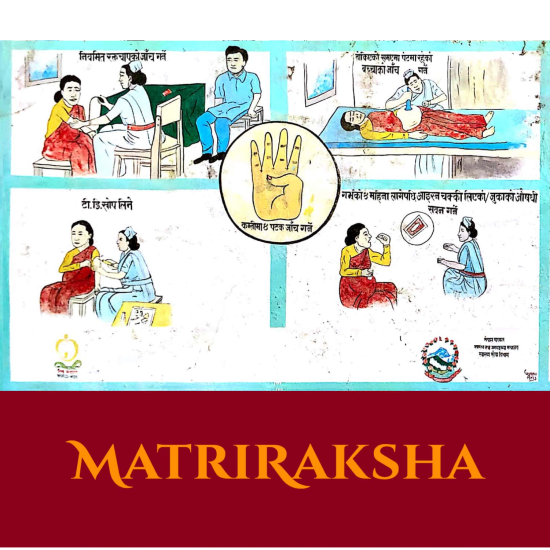Matri-Raksha
Digital Data Collection for Maternal and Perinatal Healthcare in Rural Nepal
Introduction
According to the World Health Organization, about 830 women around the world will die each day from pregnancy or childbirth-related complications. 99% of these women live in a developing country, mostly in rural areas and low-resource communities. Since most childbirth and perinatal deaths can be prevented through the provision of adequate healthcare services, the World Health Organization considers maternal and perinatal mortality key indicators for health and development and tracks them as part of their Sustainable Development Goals.
As governments, development organizations, and other entities have established programs to deliver better healthcare to pregnant women in underserved regions and decrease the number of maternal and perinatal deaths, data and information systems have grown to play a large role in monitoring these efforts. Organizations need access to reliable and granular information to be able to evaluate their programs, measuring the impact of their work, and direct scarce resources most effectively. However, data collection and processing possibilities are impacted by austere conditions with limited infrastructure, low literacy of the population, and lack of human resources.
One organization facing these challenges is One Heart World-Wide (OHW), a “501(c)(3) organization with over 15 years of experience implementing maternal and neonatal mortality prevention programs in areas where women often die alone at home giving birth.” OHW currently collects major data points such as the number of births and deaths in a community, but are unable to learn from the current information model or provide other stakeholders with useful insights due to lack of granularity, accuracy, and timeliness. While their current data collection methods are a piece-meal combination of paper reporting, SMS-based surveys, and spreadsheets, the lack of quality information is exacerbated by varying degrees of connectivity at the birth centers, the requirements of a Nepalese healthcare system that has not yet transitioned to electronic record-keeping, and the lack of digital literacy of their health care workers. Furthermore, OHW wishes to respect the time of their workers while also providing those attendants with feedback that their efforts in reporting are meaningful.
Description
For our project, we aim to support the development work of OHW in Nepal by designing an information collection and storage service that takes into account the technological limitations of this context and supports the monitoring, evaluation and learning needs of OHW. Our team will work with members of OHW and their partners through a participatory design process to facilitate daily, weekly, and monthly reports from OHW-trained skilled birth attendants and community members, located across 13 remote districts working in over 180 birth centers to support over 26,000 pregnant women.
The questions we seek to answer - the Vital Questions - center around how we might design a sociotechnical data collection system that not only maintains accuracy and timeliness of the data but respects the effort and values of the community-based maternal healthcare worker. Given that timeliness of information plays a critical role in assigning resources to prevent health crises, we suggest that design iterations to address OHW’s problem may provide particular benefit for other monitoring and evaluation (M & E) programs that support healthcare for remote underserved populations. While we expect our solutions to be highly particular to the context of Nepal, we look forward to addressing problems of important technological concern in current global health practice including:
- How does an M & E program integrate data collection across clinics with disparate levels of connectivity and infrastructure, further ensuring that the most remote clinics are represented as greatly as connected locations?
- How should an M & E program address the challenges of building a system that is sensitive to the uncertain timelines of modernization efforts for government healthcare systems?
- How should M & E programs maintain effective privacy, security, and consent mechanisms for their data collection in a low-resource context with diverse stakeholders?











